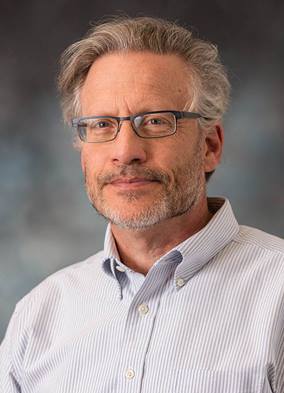Steven D Goodman, PhD

Contact Information
Dr. Goodman is a principal investigator in the Center for Microbe and Immunity Research at the Abigail Wexner Research Institute. His research focuses on gene regulation in biofilms, bacterial surface detection and attachment, horizontal gene transfer (HGT) and metagenomics, and bacterial histones. 1. Gene Regulation in Biofilms: In nature, bacteria are often found in complex microbial ecosystems. In some cases these bacteria associate to form interactive systems commonly referred to as biofilms. The oral cavity is home to hundreds of bacteria. One of these bacteria, Streptococcus mutans, causes dental caries (cavities) and is known to form biofilms (plaque) on the surface of teeth. Critical to the formation of these biofilms are the genes required to adhere to teeth. We have found that the expression of these genes is strongly regulated and coupled to the ability of the bacteria to sense their environment (e.g. when they encounter the surface of a tooth.) One of the ways that bacteria can do this is through Two Component Signal Transduction Systems (TCSTS). These systems are composed of a membrane bound protein that upon sensing a specific environmental signal alters the function of a specific transcription factor. Each TCSTS has a repertoire of genes whose expression is specifically affected upon signal detection. S. mutans has 13 TCSTS and it is our long term goal to clone, express and determine the biological function(s) of each one. In this way, we will be able to determine what S. mutans senses and how it responds. 2. Bacterial Surface Detection and Attachment: In an extension of our work above and in collaboration with Ken Nealson (Earth Sciences, LAS, USC) and Firdaus Udwadia (Aeropsace and Mechanical Engineering, ENG. USC), it has become very clear that bacteria are exquisite sensors of surfaces as they do not attach randomly to a given surface. We are identifying the surface/material properties that the bacteria need to choose where to attach and finding out what genes are involved in the process. 3. Horizontal Gene Transfer (HGT) and Metagenomics: Bacteria can spread and exchange their genetic information in three ways, namely conjugation (bacterial sex), transduction (viral mediated) and transformation (uptake of extracellular DNA). Recently it has become clear that in a given ecological niche HGT occurs so rampantly that bacteria are believed to have access to the largess of genetic information for all of the constituent bacteria (aka the metagenome). We have discovered a bacteriophage that propagates in the oral cavity by both infection with its native host, a periodontal pathogen Aggregatibacter actinomycetemcomintans, and by transformation. We are using this bacteriophage as a model system to determine which routes of HGT are most likely to explain how genes (e.g. those that encode antibiotic resistance) are spread from one bacterium to another. 4. Bacterial Histones: IHF is a small abundant bacterial protein that binds to and bends a specific DNA sequence. IHF always seems to act in an accessory capacity and is known to function in virtually all types of nucleoprotein systems (e.g. replication, gene expression, and recombination). Thus it has been proposed that IHF modulates (activates or represses) the systems where it acts through DNA bending. In this way, it functionally resembles eukaryotic histones. Recently, we have discovered that IHF and a related protein HU play a critical role in the extracellular matrix of pathogenic biofilms. This matrix protects bacteria from the immune system and antimicrobial therapies and causes chronicity of bacterial infections. In collaboration with Lauren Bakaletz (Center for Microbial Pathogenesis) we have developed an immunotherapeutic approach to remove these proteins from the biofilm causing the subsequent release of bacteria from their protective shield and making them vulnerable to clearance by both antibiotics and the immune system
-
Center for Microbe and Immunity Research
Principal Investigator -
Primary Department
Center for Microbe and Immunity Research
2012 - Present Center for Microbial Pathogenesis, The Research Institute at Nationwide Children's Hospital, Principal Investigator
2009 - 2010 University of Southern California, Chair, Biomedical Sciences
2009 - 2010 University of Southern California, Associate Professor of Biomedical Sciences
